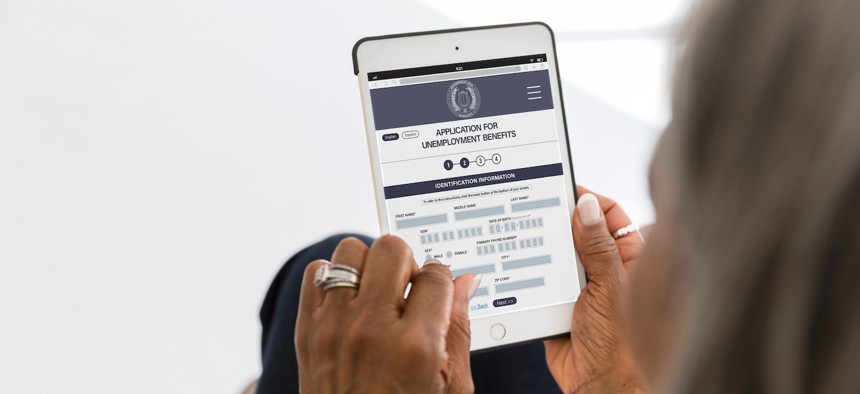Labor Department experiments with AI in unemployment systems

SDI Productions/Getty Images
The agency plans to use the current “calm” in unemployment claims to better prepare for the next storm.
The U.S. Labor Department is experimenting with how states might be able to use artificial intelligence to assist employees charged with sorting through claims and delivering benefits.
As of now, it doesn't appear that the Labor Department is looking to outsource actual benefits determinations to algorithms. The research, dubbed the artificial intelligence adjudicator assistance project, is looking for ways to sort and route claims information to staff.
"Let's get away from the idea of, you know, technology is going to replace human intelligence, but rather how can technology assist the…staff that work on UI programs to do the work more accurately and efficiently," Andrew Stettner, director of the Labor Department’s Office of UI Modernization, told Nextgov/FCW. "And so that's what this model we're testing out is doing."
During and since the pandemic, states often struggled to work through claim backlogs and have since asked the department how they might use automation and AI to their advantage, Stettner said.
Labor is doing prototyping work to explore just that possibility with the state of Colorado and Stanford University’s Regulation, Evaluation and Governance Lab, using historical data from Colorado, as opposed to incoming claims. The goal is to to understand how models could be used in this low-risk environment, not to build a prototype for production, Stettner said.
AI could potentially help with sorting incoming information and directing new claims to staff with the right expertise to sift through them, he said. Some claims don’t require followup, while others might require interviews or more fact-finding, a blog on the project reads, so sorting those could yield efficiencies for workers.
AI could also sift through information to help staff find important facts, said Stettner.
Labor is also working on a trustworthy AI guide and a pilot of tools for adjudicating workers compensation claims, both with the help of Stanford.
The work is happening as the department pursues its goal “to take advantage of a period of low unemployment and some additional resources to really shore up the technology and operations of this system so it’ll be better prepared next time it’s tested,” said Stettner.
The department got $2 billion to modernize the jobless aid system under the 2021 American Rescue Plan Act, but Congress clawed back half of that as part of the debt ceiling bill last year.
During the pandemic, many states struggled to get benefits to the surge of claimants, while also combatting an uptick in fraudulent claims and implementing new jobless aid programs created by Congress.
Low funding levels over time, outdated tech and paper-based, manual processes were all “holes in the roof” of the unemployment system when the “storm” of the pandemic hit in 2020, Julie Su, acting Labor Secretary, said at an event in late January.
“Now, in between storms, is the time to build a system that is going to work the next time something terrible happens,” she said. “Part of that requires funding… We also have a set of reform principles that we’ve put forward, and we are committed to continue to work with Congress to make sure that we get those done.”
In terms of technology, specifically, the department announced a new Open UI Initiative in collaboration with the National Association of State Workforce Agencies late last year. The project is meant to help states to adopt open and modular tech solutions and push the market to offer those types of solutions, too.
The department is also still offering identity verification solutions. Eight states currently use either Login.gov or the U.S. Postal Service, and more are interested in joining, said Stettner.
Setting out what good UI tech looks like and supporting states are both roles the department envisions for itself moving forward, he added.
The department also aims to foster modular tech development and the sharing of tech across states by setting up frameworks, methods and resources like interoperability protocols to facilitate it — although he noted that some of that work will be done in partnership with NASWA’s Information Technology Support Center.
“We’re not at all done when it comes to modernizing the system,” he said. “That’s a long-term commitment.”



